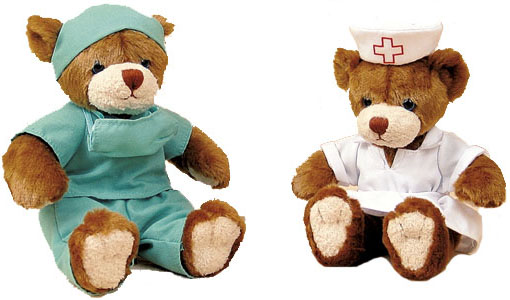OPTIMIZE YOUR RESEARCH RAT APOLIPOPROTEIN B ELISA KIT
!DOCTYPE HTML HTML LANGSLSI PREFIXOG HTTPSOGPMENS HEADSCRIPT DATANOOPTIMIZE1VAR LITESPEEDDOCREFSESSIONSTORAGEGETITEM(LITESPEEDDOCREF)LITESPEEDDOCREF&&(OBJECTDEFINEPROPERTY(DOCUMENTREFERRER{GETFUNCTION(){RETURNARIS MASHZONE DATAFEED DETAILS URLHTTPEBZB2BP6EADVNAJNJCOM7777 QUERY INVOKEPUBOPTIMIZEMASHZONEADAPTERRETRIEVEDATA?DATATYPEKPIINSTANCEREADING&KEYSKPIINSTANCEID&VALUES295&OPERATORSEQUALTO&KEYSTIMEPERIOD&VALUESLASTMONTH&OPERATORSEQUALTO&KEYSAGGREGATIONINTER
DEAR DOCTOR AND TEAM IN ORDER TO OPTIMIZE
OPTIMIZE YOUR RESEARCH BOVINE RETINOLBINDING PROTEIN 3 RBP3 ELISA
Optimize Your Research Mouse Lymphatic Vessel Endothelial Hyaluronic Acid
OPTIMIZE YOUR RESEARCH RAT APOLIPOPROTEIN B ELISA KIT

Optimize Your Research
Rat apolipoprotein B ELISA Kit

Cat.No E1356Ra
Standard Curve Range: 0.05-3mmol/L
Sensitivity: 0.02mmol/L
Size: 96 wells / 48 wells
Storage: Store the reagents at 2-8°C. For over 6-month storage refer to the expiration date keep it at -20°C. Avoid repeated thaw cycles. If individual reagents are opened it is recommended that the kit be used within 1 month.
*This product is for research use only, not for use in diagnosis procedures. It’s highly recommend to read this instruction entirely before use.
Precision
Intra-Assay Precision (Precision within an assay) Three samples of known concentration were tested on one plate to assess intra-assay precision.
Inter-Assay Precision (Precision between assays) Three samples of known concentration were tested in separate assays to assess inter-assay precision.
CV(%) = SD/mean x 100
Intra-Assay: CV<8%
Inter-Assay: CV<10%
Intended Use
This sandwich kit is for the accurate quantitative detection of Rat apolipoprotein B (also known as APO-B) in serum, plasma, cell culture supernates, Ascites, tissue homogenates or other biological fluids.
Assay Principle
This kit is an Enzyme-Linked Immunosorbent Assay (ELISA). The plate has been pre-coated with Rat APO-B antibody. APO-B present in the sample is added and binds to antibodies coated on the wells. And then biotinylated Rat APO-B Antibody is added and binds to APO-B in the sample. Then Streptavidin-HRP is added and binds to the Biotinylated APO-B antibody. After incubation unbound Streptavidin-HRP is washed away during a washing step. Substrate solution is then added and color develops in proportion to the amount of Rat APO-B. The reaction is terminated by addition of acidic stop solution and absorbance is measured at 450 nm.
|
Components |
Quantity (96T) |
Quantity (48T) |
|
Standard Solution (3.2mmol/L) |
0.5ml x1 |
0.5ml x1 |
|
Pre-coated ELISA Plate |
12 * 8 well strips x1 |
12 * 4 well strips x1 |
|
Standard Diluent |
3ml x1 |
3ml x1 |
|
Streptavidin-HRP |
6ml x1 |
3ml x1 |
|
Stop Solution |
6ml x1 |
3ml x1 |
|
Substrate Solution A |
6ml x1 |
3ml x1 |
|
Substrate Solution B |
6ml x1 |
3ml x1 |
|
Wash Buffer Concentrate (25x) |
20ml x1 |
20ml x1 |
|
Biotinylated Rat APO-B Antibody |
1ml x1 |
1ml x1 |
|
User Instruction |
1 |
1 |
|
Plate Sealer |
2 pics |
2 pics |
|
Zipper bag |
1 pic |
1 pic |
Reagent Provided
Material Required But Not Supplied
37°C±0.5°C incubator
Absorbent paper
Precision pipettes and disposable pipette tips
Clean tubes
Deionized or distilled water
Microplate reader with 450 ± 10nm wavelength filter
Precautions
Prior to use, the kit and sample should be warmed naturally to room temperature 30 minutes.
This instruction must be strictly followed in the experiment.
Once the desired number of strips has been removed, immediately reseal the bag to protect the remain from deterioration. Cover all reagents when not in use.
Make sure pipetting order and rate of addition from well-to-well when pipetting reagents.
Pipette tips and plate sealer in hand should be clean and disposable to avoid cross-contamination.
Avoid using the reagents from different batches together.
Substrate solution B is sensitive to light, don’t expose substrate solution B to light for a long time.
Stop solution contains acid. Please wear eye, hand and skin protection when using this material. Avoid contact of skin or mucous membranes with kit reagent.
The kit should not be used beyond the expiration date.
Specimen Collection Serum Allow serum to clot for 10-20 minutes at room temperature. Centrifuge at 2000-3000 RPM for 20 minutes. Collect the supernatant without sediment.
Plasma Collect plasma using EDTA or heparin as an anticoagulant.After mix 10-20 minutes, centrifuge samples for 20 minutes at 2000-3000 RPM. Collect the supernatant without sediment.
Urine/Ascites/ Cerebrospinal fluid Collect by sterile tube. Centrifuge at 2000-3000 RPM for 20 minutes. Collect the supernatant without sediment.
Cell culture supernatant Collect by sterile tubes. When detecting secrete components, centrifuge at 2000-3000 RPM for 20 minutes. Collect the supernatants. When detecting the components in the cell, use PBS (pH 7.2-7.4) to dilute cell suspension , the cell concentration of approximately 1 million/ml. Damage cells through repeated freeze-thaw cycles to let out the inside components. Centrifuge at 2000-3000 RPM for 20 minutes. Collect the supernatant without sediment.
Tissue Rinse tissues in ice-cold PBS (pH 7.4) to remove excess blood thoroughly and weigh before homogenization. Mince tissues and homogenize them in PBS (tissue weight (g): PBS (mL) volume=1:9) with a glass homogenizer on ice. To further break down the cells, you can sonicate the suspension with an ultrasonic cell disrupter or subject it to freeze-thaw cycles. The homogenates are then centrifuged for 5 minutes at 5000×g to get the supernatant.
Note
Sample concentrations should be predicted before being used in the assay. If the sample concentration is not within the range of the standard curve, users must contact us to determine the optimal sample for their particular experiments.
Samples to be used within 5 days should be stored at 2-8°C. Samples should be aliquoted or must be stored at -20°C within 1 month or -80°C within 6 months. Avoid repeated freeze thaw cycles.
Samples should be brought to room temperature before starting the assay.
Centrifuge to collect sample before use.
Samples containing NaN3 can’t be tested as it inhibits the activity of Horse Radish Peroxidase (HRP).
Collect the supernatants carefully. When sediments occurred during storage, centrifugation should be performed again.
Hemolysis can greatly impact the validity of test results. Take care to minimize hemolysis.
*Sample can't be diluted with this kit. Owing to the the material we use to prepare the kit, the sample matrix interference may falsely depress the specificity and accuracy of the assay.
Reagent Preparation
All reagents should be brought to room temperature before use.
Standard Reconstitute the 120μl of the standard (3.2mmol/L) with 120μl of standard diluent to generate a 1.6mmol/L standard stock solution. Allow the standard to sit for 15 mins with gentle agitation prior to making dilutions. Prepare duplicate standard points by serially diluting the standard stock solution (1.6mmol/L) 1:2 with standard diluent to produce0.8mmol/L, 0.4mmol/L, 0.2mmol/L and0.1mmol/L solutions. Standard diluent serves as the zero standard(0 ng/ml). Any remaining solution should be frozen at -20°C and used within one month. Dilution of standard solutions suggested are as follows:
|
1.6mmol/L |
Standard No.5 |
120μl Original Standard + 120μl Standard Diluent |
|
0.8mmol/L |
Standard No.4 |
120μl Standard No.5 + 120μl Standard Diluent |
|
0.4mmol/L |
Standard No.3 |
120μl Standard No.4 + 120μl Standard Diluent |
|
0.2mmol/L |
Standard No.2 |
120μl Standard No.3 + 120μl Standard Diluent |
|
0.1mmol/L |
Standard No.1 |
120μl Standard No.2 + 120μl Standard Diluent |

|
Standard Concentration |
Standard No.5 |
Standard No.4 |
Standard No.3 |
Standard No.2 |
Standard No.1 |
|
3.2mmol/L |
1.6mmol/L |
0.8mmol/L |
0.4mmol/L |
0.2mmol/L |
0.1mmol/L |
Wash Buffer Dilute 20ml of Wash Buffer Concentrate 25x into deionized or distilled water to yield 500 ml of 1x Wash Buffer. If crystals have formed in the concentrate, mix gently until the crystals have completely dissolved.
Assay Procedure
Prepare all reagents, standard solutions and samples as instructed. Bring all reagents to room temperature before use. The assay is performed at room temperature.
Determine the number of strips required for the assay. Insert the strips in the frames for use. The unused strips should be stored at 2-8°C.
Add 50μl standard to standard well. Note: Don’t add antibody to standard well because the standard solution contains biotinylated antibody.
Add 40μl sample to sample wells and then add 10μl anti-APO-B antibody to sample wells, then add 50μl streptavidin-HRP to sample wells and standard wells ( Not blank control well ). Mix well. Cover the plate with a sealer. Incubate 60 minutes at 37°C.
Remove the sealer and wash the plate 5 times with wash buffer. Soak wells with at least 0.35 ml wash buffer for 30 seconds to 1 minute for each wash. For automated washing, aspirate or decant each well and wash 5 times with wash buffer. Blot the plate onto paper towels or other absorbent material.
Add 50μl substrate solution A to each well and then add 50μl substrate solution B to each well. Incubate plate covered with a new sealer for 10 minutes at 37°C in the dark.
Add 50μl Stop Solution to each well, the blue color will change into yellow immediately.
Determine the optical density (OD value) of each well immediately using a microplate reader set to 450 nm within 10 minuets after adding the stop solution.
Summary
Prepare all reagents, samples and standards.
Add sample and ELISA reagent into each well. Incubate for 1 hour at 37°C.
Wash the plate 5 times.
Add substrate solution A and B. Incubate for 10 minutes at 37°C.
Add stop solution and color develops.
Read the OD value within 10 minutes.
Calculation of Result
Construct a standard curve by plotting the average OD for each standard on the vertical (Y) axis against the concentration on the horizontal (X) axis and draw a best fit curve through the points on the graph. These calculations can be best performed with computer-based curve-fitting software and the best fit line can be determined by regression analysis.
Typical Data
This standard curve is only for demonstration purposes. A standard curve should be generated with each assay.

Troubleshooting
|
Possible Case |
Solution |
|
|
High Background |
||
|
Improper washing Substrate was contaminated Non-specific binding of antibody Plate are not be sealing incompletely Incorrect incubation temperature Substrate exposed to light prior to use Contaminated wash buffer |
Increasing duration of soaking steps Replace. Substrate should be clean and avoid crossed contamination by using the sealer Replace another purified antibody or blocking buffer Make sure to follow the instruction strictly Incubate at room temperature Keep substrate in a dark place Use a clean buffers and sterile filter |
|
|
Weak Signal |
||
|
Improper washing Incorrect incubation temperature Antibody are not enough Reagent are contaminated Pipette are not clean |
Increasing duration of soaking steps Incubate at room temperature Increase the concentration of the antibody Use new one Pipette should be clean |
|
|
No Signal |
||
|
Reagent are contaminated Sample prepared incorrectly Antibody are not enough Wash buffer contains sodium azide HRP was not added |
Use new one Make sure the sample workable/dilution Increase the antibody concentration Use a new wash buffer and avoid sodium azide in it Add HRP according to the instruction |
|
|
Poor Precision |
||
|
Imprecise/ inaccurate pipetting Incomplete washing of the wells
|
Check/ calibrate pipettes Make sure wells are washed adequately by filling the wells with wash buffer and all residual antibody solutions crossed well before washing. |
|

Tel: 86 21 31007137 | Fax: 86 21 65109711 816 | E-mail: [email protected]
OPTIMIZED CONDITIONS FOR MICROENCAPSULATION USING KONJACPECTIN GEL MIXTURE TO
OPTIMIZING CLIENT CENTER HOLDINGS 1 MÜŞTERI MERKEZI STOKLARINI OPTIMIZE
PRESS RELEASE OPTIMIZE LOGISTIC PROCESSES WITH ABB’S PERFORMANCE MANUAL
Tags: apolipoprotein b, rat apolipoprotein, apolipoprotein, optimize, research, elisa
- ALLIANCE HOCKEY 71 ALBERT STREET STRATFORD ONTARIO N5A
- WISE REGRESSIONCORRELATION INTERACTIVE LAB MODULE 2 MODULE 2
- EL VIAJE (DE REGRESO) DE SERGIO PITOL JOSÉ RAMÓN
- ZAKRES OBOWIĄZKÓW ODPOWIEDZIALNOŚCI I UPRAWNIEŃ PIELĘGNIARKI POŁOŻNEJ ODDZIAŁOWEJ NAZWISKO
- MINUTA TERMO DE RETIRATIFICAÇÃO ORIENTAÇÕES ESTA MINUTA DEVERÁ
- NÁZOV PREDMETU MAĎARSKÝ JAZYK A LITERATÚRA ČASOVÝ ROZSAH VÝUČBY
- RMS CONTRACTOR WHS SITE SPECIFIC PLAN ASSESSMENT INTRODUCTION PROJECT
- SOLUTION NAME TV PROGRAMME WHEN ABOUT WHAT GRANNY LOVE
- BANCO NACIONAL DE LÍNEAS CELULARES (TRONCALES) NATIONAL BANK OF
- GAIN REPORT QA7002 PAGE 10 OF 10 USDA
- ACTO LICITACION PRIVADA Nº 022016 SAMO 2° LLAMADO
- OBSERVACIONES SOBRE LA DINÁMICA DE LAS CONTROVERSIAS M
- ……………………………………… ZAŁĄCZNIK NR 13 DO SIWZ PIECZĘĆ WYKONAWCY PAKIET
- Avtal b Skolans Nätverk Regler och Anvisningar för Användare
- ERZINCAN ÜNIVERSITESI MESLEK YÜKSEKOKULLARI EĞITIM UYGULAMA VE STAJ YÖNERGESI
- 37 A STRAW MAN PROPOSAL FOR A QUANTITATIVE DEFINITION
- 115 HOW DOES THE NEURAL NETWORK WORK AS AN
- ŚNIEŻNA KULA W „ZIELONYM” CZYLI „JAK ZORGANIZOWAĆ PRACĘ SAMORZĄDU
- PC2 NORMATIVA TÉCNICA DE APLICACIÓN DE ACUERDO CON LO
- NATIONAL RECOVERY PLAN FOR THE LARGEEARED PIED BAT CHALINOLOBUS
- KEMENTERIAN PENDIDIKAN KEBUDAYAAN RISET DAN TEKNOLOGI UNIVERSITAS
- ZÁSADY POSTUPU PŘI PRONÁJMU BYTŮ Z DISPONIBILNÍCH ZDROJŮ MĚSTSKÉ
- PRAVIDLA PRO HRU SLEPCŮ A ZRAKOVĚ POSTIŽENÝCH VÝTAH Z
- GUIDE À DESTINATION DES DIRECTEURS D’ÉCOLE ENFANCE EN DANGER
- ANKETNI UPITNIK – “GRAĐANI I DRŽAVA” OSNOVNI PODACI O
- NOTĂ DE FUNDAMENTARE LA ORDONANŢA DE URGENŢĂ A GUVERNULUI
- MÚSICA PARA LOGOS – PAG 12 POR EDUARDO E
- LES FORMATIONS DES MAISONS FAMILIALES RURALES
- NYILATKOZAT AZ ÁRBEVÉTELRŐL ALULÍROTT RÉSZVÉTELRE JELENTKEZŐALKALMASSÁG IGAZOLÁSÁBAN RÉSZT VEVŐ
- NONCLINICAL RECORDS MANAGEMENT POLICY VERSION 7 NAME OF RESPONSIBLE
SKŁAD OBWODOWYCH KOMISJI WYBORCZYCH W GMINIE ŁAPY W WYBORACH
 DATUM 412 2008 PROJEKT SPORAZUMEVANJE V TUJIH JEZIKIH
DATUM 412 2008 PROJEKT SPORAZUMEVANJE V TUJIH JEZIKIHSTRUKTURA ECTS BODOVA NA PREDDIPLOMSKOM STUDIJU TALIJANISTIKE DVOPREDMETNI STUDIJ
 DATA DIRECTOR LOGIN INFORMATION WEBSITE WWWACHIEVEDATACOMESUHSD USER NAME LAST
DATA DIRECTOR LOGIN INFORMATION WEBSITE WWWACHIEVEDATACOMESUHSD USER NAME LAST GEOPLANO INTRODUÇÃO UM DOS PRIMEIROS TRABALHOS SOBRE
GEOPLANO INTRODUÇÃO UM DOS PRIMEIROS TRABALHOS SOBRE REF615 V20 ANSI HMILEDLABELTEMPLATES ORDER CODE HAFAAAAXXAE1BNNXXC OR HAFAAAAXXBE1BNNXXC
REF615 V20 ANSI HMILEDLABELTEMPLATES ORDER CODE HAFAAAAXXAE1BNNXXC OR HAFAAAAXXBE1BNNXXCЕ Ж Е К В А Р Т А
COMUNICACIÓN AUDIOVISUAL CONVOCATORIA DE SEPTIEMBRE LENGUA ESPAÑOLA (AB03) TEXTO
UREDBU O SKUPNOM IZUZEĆU SPORAZUMA O DISTRIBUCIJI I SERVISIRANJU
 RECTANGLE 4 GMW EMPLOYMENT APPLICATION PLEASE COMPLETE THIS FORM
RECTANGLE 4 GMW EMPLOYMENT APPLICATION PLEASE COMPLETE THIS FORM TITLE LEYENDA POPO E IZTA UNITACTIVITY NO NATURAL DISASTERSACTIVITY
TITLE LEYENDA POPO E IZTA UNITACTIVITY NO NATURAL DISASTERSACTIVITY H ABANA BLUES CUBAESPAGNEFRANCE 110’ FICTION COULEUR 2005 COLLÈGE
H ABANA BLUES CUBAESPAGNEFRANCE 110’ FICTION COULEUR 2005 COLLÈGEDISASTER DAMAGE AIDS PETITION WISCONSIN DEPARTMENT OF TRANSPORTATION
 COLEGIO DE PSICOLOGOS DE LA PROVINCIA DE CORDOBA MATRICULADOS
COLEGIO DE PSICOLOGOS DE LA PROVINCIA DE CORDOBA MATRICULADOS BERITA DAERAH KABUPATEN SERANG NOMOR 04 TAHUN
BERITA DAERAH KABUPATEN SERANG NOMOR 04 TAHUN  STREPTOKOKNE BOLESTI STREPTOKOKI SU VELIKA I RAZNOLIKA SKUPINA BAKTERIJA
STREPTOKOKNE BOLESTI STREPTOKOKI SU VELIKA I RAZNOLIKA SKUPINA BAKTERIJAŽUPAN OBČINSKEMU SVETU DATUM 362013 ZADEVA SKLEP O POTRDITVI
LIBERTAD Y RESPONSABILIDAD LA ESTATUA DE LA LIBERTAD DOMINA
THE ELEVENTH ORIENTATION COURSE ON FORCED MIGRATION SCHEDULE FOR
 COLEGIO PRÍNCIPE SAN CARLOS CÓDIGO FGF03 GESTIÓN DE FORMACIÓN
COLEGIO PRÍNCIPE SAN CARLOS CÓDIGO FGF03 GESTIÓN DE FORMACIÓN